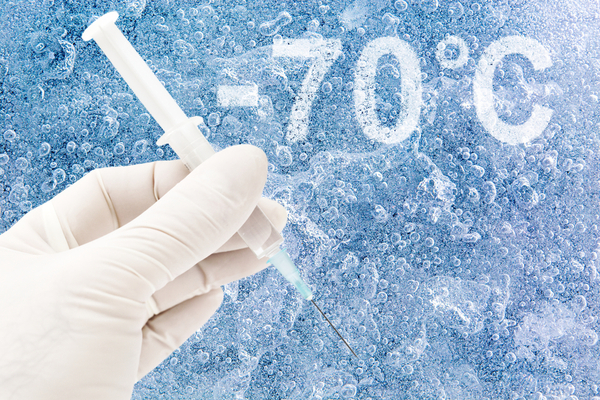More than two million doses of the two new vaccines against COVID-19 have been put in people’s arms since December 14. But racing the shots to the frontline health care workers hasn’t been an easy feat—the Pfizer-BioNTech vaccine specifically must be stored at subzero temperatures, creating a logistical puzzle of dry ice and specialized freezers. And while the Moderna vaccine remains stable at slightly balmier temperatures, it too must stay frozen throughout shipping and long-term storage.
So what’s the deal with these cold storage requirements? Here’s why it’s critical that the new COVID-19 vaccines are kept super chilly and how to make sure the one you get has been stored properly.
It has to do with a very important ingredient: messenger RNA (or mRNA). The mRNA in the vaccines is genetic material that teaches our immune cells how to make the spike protein found on the virus that causes COVID-19, according to the Centers for Disease Control and Prevention (CDC). The immune system responds by creating antibodies against that specific spike protein, ultimately learning how to protect the body against the virus in the future.
By their very nature, mRNA molecules are unstable—if they hung out for a long time, our cells could accumulate harmful levels of the proteins they help create.
“mRNA rapidly degrades. There are also enzymes in the environment and all around us that break down mRNA,” Lisa Morici, PhD, associate professor in the microbiology and immunology department at Tulane University School of Medicine, where she studies novel vaccine platforms, tells Health.
Vaccine-makers also coat the mRNA in lipid nanoparticles. These tiny bubbles of fat help carry the mRNA to our cells and offer a degree of protection against enzymes that could destroy the fragile genetic material.
“It’s like an M&M,” Timothy Lise, PharmD, executive director of pharmacy services for New Jersey’s Atlantic Health System, where he has served an integral role in distributing the COVID-19 vaccine, tells Health magazine. “If you have chocolate in your hand, it’s going to melt, but with the candy coating on the outside, it doesn’t.”
The lipid nanoparticle coating isn’t quite enough to protect the mRNA, though. That’s where the cold storage comes into play. The enzymes that break down mRNA “don’t work at really, really cold temperatures,” explains Morici.
That means between -13 degrees Fahrenheit and 5 degrees Fahrenheit for the Moderna vaccine and a downright arctic -112 degrees Fahrenheit to -76 degrees Fahrenheit for the one from Pfizer. The specific lipid nanoparticle formulas, which are kept secret by the drugmakers, determine just how cold the vaccines must be kept, hence the different storage requirements.
—
Photo Credit: Tomas Ragina / Shutterstock.com
